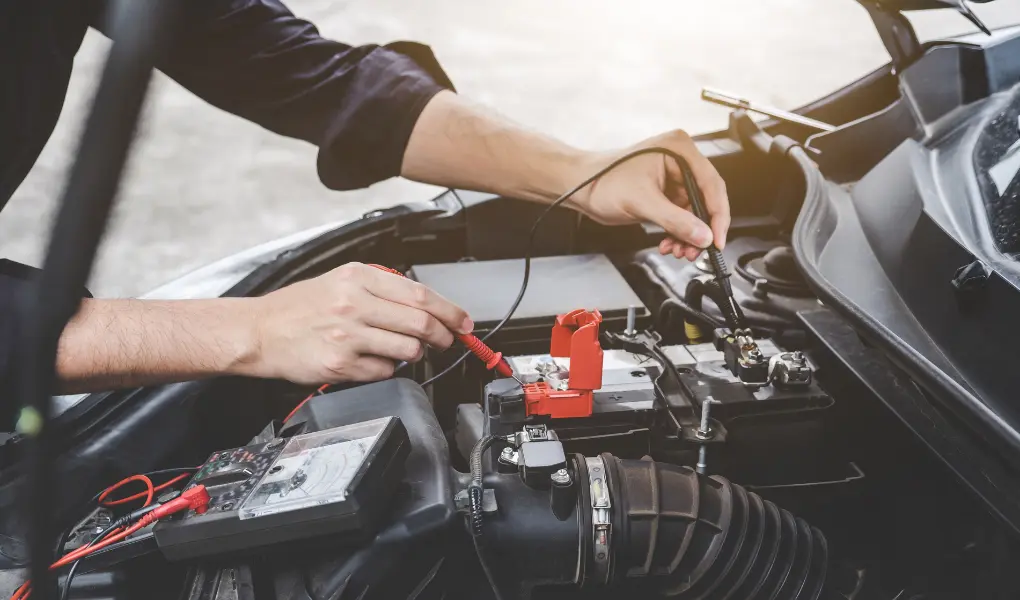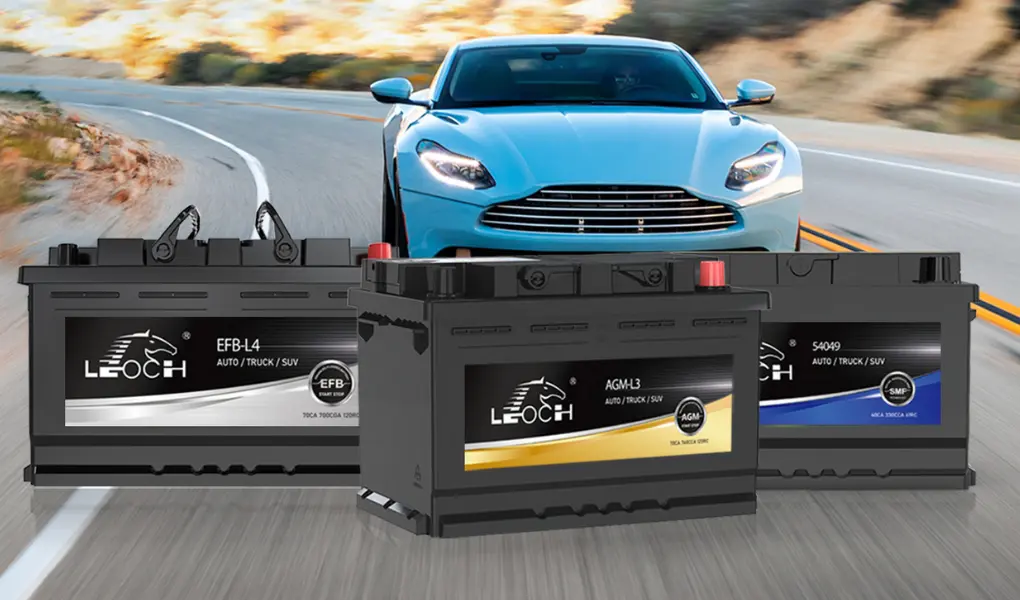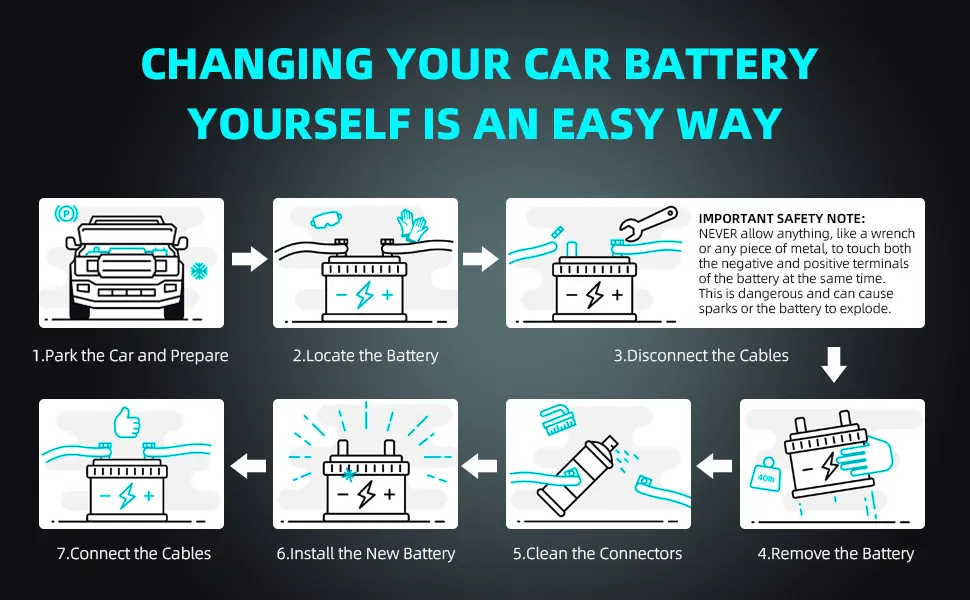You're already late for work. You hop into the driver's seat, turn the key…and nothing. Not a click, not a hum—just silence. Maybe the lights flicker for a second, or maybe your dash goes completely dark. You pop the hood, stare at the battery like it betrayed you, and wonder: Is the battery really dead, or is something else wrong?
Whether you're stuck in a mall parking lot, your driveway, or even on a road trip, battery failure often strikes at the most inconvenient time. Let's dive into how to tell if your battery is actually dead, what causes it, and how to replace it without losing your settings.

Before blaming the battery, check for these unmistakable signs of battery death:
- No crank, no start, no lights
- Dashboard lights flicker and die
- Clicking sound when turning the key
- Power windows and locks not responding
- Battery warning light is on
- Corrosion on terminals or visible battery swelling
*Tip: If you're getting intermittent power, your battery might be weak—but not fully dead yet.
Question all the time from drivers: "Why did my battery die? It was working fine just yesterday."
The truth is, battery failure isn't always sudden. It's usually caused by a mix of aging and usage habits. Here are the two main categories:
- Battery age:
Every battery has a lifespan. Most car batteries last around 3 to 5 years. After that, the internal plates degrade, and performance drops. If yours is past this window, it may simply be time.
- Frequent Use:
Starting your car daily, using electronics, and short trips all slowly wear down battery life.
- High Mileage:
Cars with over 100,000 miles usually put more strain on the electrical system.
- Leaving lights or electronics on:
Even something as small as a dome light left overnight can drain a healthy battery. If the battery's already weak, this might push it over the edge.
- Infrequent driving or long storage:
Letting a car sit for weeks without starting it? That's a slow killer for batteries. Batteries naturally lose charge over time without regular use.
- Harsh climates:
Excessive heat accelerates battery aging, while freezing temperatures reduce a battery's ability to deliver power.
- Loose or corroded connections:
Many cases where the battery itself was fine — it just wasn't delivering power because the terminals were dirty, loose, or covered in corrosion. It's a simple fix, but easy to overlook.
- Charging system problems:
Sometimes the battery's not the problem at all — it's the alternator or voltage regulator. If your charging system isn't working properly, your battery might not be getting the power it needs, even during long drives.
If you're unsure what caused your battery to fail, don't just replace it — diagnose it. That way, you don't end up with the same problem a few months down the road.
Once you've confirmed your battery is dead, the next step is replacement. Should you DIY or visit a service shop?
Replacing your car battery yourself can be a quick and affordable solution, especially for vehicles with easy-to-access battery compartments. If your car doesn't have advanced electronics or reset-sensitive systems, you can likely handle the swap with just a few basic tools. DIY is ideal for older models where no computer memory or security coding needs to be preserved.
On the other hand, if your vehicle is a newer or luxury model with integrated battery management or coded systems, it's safer to go to a professional. Trained technicians can reset onboard electronics, run diagnostic checks, and ensure your new battery is properly installed. Plus, they'll handle the safe disposal of your old battery, giving you peace of mind that everything's done right.
Want a reliable battery you can trust? Explore LEOCH's range of automotive batteries — Full models covering BCI / EN / JIS / DIN, designed for long life, high cranking power, and everyday dependability.

Modern vehicles store memory settings like clock, radio, and even seat positions. Here's how to keep them intact while swapping your battery:
- New car battery (check vehicle specs)
- Socket wrench
- Battery terminal cleaner
- Anti-corrosion pads or spray
- Memory saver (OBD2 or 12V plug-in)
*A memory saver keeps your car's electronics powered during battery replacement. It prevents system resets by plugging into your car's OBD2 port or 12V outlet. Highly recommended for vehicles with digital dashboards or keyless systems.
- Turn off the engine and all electronics.
- Connect a memory saver to preserve settings.
- Open the hood and locate the battery.
- Disconnect the negative (black) cable first, then the positive.
- Unbolt the hold-down clamp and remove the old battery.
- Clean the terminals and dry any moisture.
- Install the new battery — Connect the positive cable first, then the negative.
- Apply anti-corrosion spray if needed.
- Secure the battery and remove the memory saver.
- Start your engine and verify that all settings remain.

Give your new battery a long, healthy life with a few simple habits:
- Drive regularly to keep the battery charged.
- Avoid frequent short trips that don't allow full recharge.
- Clean battery terminals every few months to prevent corrosion.
- Disconnect the negative cable if storing your car for weeks.
- Shield from temperature extremes using insulation or a garage.
- Test battery voltage twice a year, especially before winter/summer.
Keep your vehicle powered with confidence. LEOCH batteries are built to perform — from daily drives to demanding climates.
Battery failure is frustrating — but preventable. By learning the signs, understanding the causes, and following safe replacement steps, you can stay ahead of the problem. Whether you're doing it yourself or going to a pro, choosing a high-quality battery and taking care of it makes all the difference.
Always keep jumper cables or a portable jump starter in your vehicle. It's a small safety net that can save you big stress.
Ready to upgrade? Find your ideal replacement with LEOCH's trusted battery solutions.
Most car batteries last 3–5 years, depending on usage, weather, and maintenance.
While mileage isn't a precise metric, batteries often last 50,000–60,000 miles, assuming average conditions.
Not really. With the right tools and a basic guide, most people can do it in under 30 minutes — especially with modern cars that have easy-access battery compartments.
CCA stands for Cold Cranking Amps — it measures your battery's ability to start in cold weather. The higher the number, the better for winter driving.
→ Read our detailed guide to understanding CCA and choosing the right rating
Some batteries have a built-in indicator that shows battery charge level: green (good), black (needs charge), or white/yellow (replace).
Each vehicle type has unique requirements. Motorcycle and lawn mower batteries are smaller and need gentler handling. RVs often use deep-cycle batteries.
→ Check out our full article on how to replace transportation batteries
Want expert support and top-tier products?
Choose LEOCH — a global leader in energy storage solutions trusted by millions worldwide.
About LEOCH BATTERY
Established in 1999, LEOCH BATTERY is a globally recognized leader in power solutions. With an extensive global presence, LEOCH BATTERY operates 21 state-of-the-art manufacturing facilities. Our global footprint includes over 80 local service companies, and we proudly serve clients in over 150 countries and regions worldwide.
LEOCH BATTERY is your trusted partner for industrial and commercial energy storage solutions. Our diverse product and service portfolio is strategically designed to meet the needs of our clients, including: Energy Storage Systems, Telecom & Data Center Power Solutions, Starting Power Solutions, Motive Power Solutions, and Battery Recycling. Want more information, please visit www.leoch.com